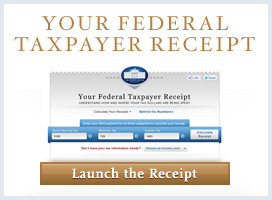Facing the Fiscal Facts
Posted by on January 28, 2010 at 04:09 PM EDT
A Wall Street Journal op-ed today by the prior Administration’s CEA Chair, Edward Lazear, observes that the ratio of federal spending-to-GDP has risen by 14 percent since 2008—and that the transition from 2008 to 2009 saw the greatest annual increase in spending in the last 30 years.
Ed is right about the numbers—but let’s look at the facts.
On January 7, 2009, the Congressional Budget Office issued its Economic and Budget Outlook for Fiscal Years 2009-2019. In that document, CBO projected that government spending would rise from 20.9 percent of GDP in fiscal year 2008 to 24.9 percent of GDP in fiscal year 2009. (Just for the record, that CBO projection was issued 2 weeks before the current Administration took office.)
This week, CBO issued its updated Economic and Budget Outlook for Fiscal Years 2010-2020. That document shows that government spending in fiscal year 2009 turned out to be 24.7 percent—roughly the same as what CBO had initially projected. (The mix of spending was slightly different from what CBO had projected, with somewhat lower mandatory spending and somewhat higher discretionary spending as a share of the economy.)
It is thus correct that federal spending rose by roughly 4 percentage points of GDP between 2008 and 2009 -- and it is also the case that the increase in spending has helped to stabilize the economy -- but it is wrong to attribute that increase primarily to Administration actions since it took office. The increase was already on the books when we arrived.
Placing blame or pointing fingers for how we got into the current fiscal situation, however, is not going to get us out of it. What we must do—and what the President is focused on—is moving forward to not only jumpstart job creation now, but also begin to address our unsustainable fiscal path over time.
One important step in that direction is to make sure we don’t make the hole any deeper. The Administration has embraced—and today the Senate passed—statutory pay-as-you-go (PAYGO) legislation. PAYGO forces us to live by a simple but important principle: Congress can only spend a dollar on an entitlement increase or tax cut if it saves a dollar elsewhere.
Not making the medium-term fiscal hole any bigger, however, doesn’t solve the underlying problem. We will have more to say about this on Monday, when we release the Fiscal Year 2011 budget. As the President emphasized, the only way to solve our fiscal challenge will be to solve it in a bipartisan fashion. That’s why, in addition to the policies we will be releasing on Monday, the President has called for the creation of a bipartisan Fiscal Commission to identify policies to improve the fiscal situation in the medium term and to achieve fiscal sustainability over the long run.
White House Blogs
- The White House Blog
- Middle Class Task Force
- Council of Economic Advisers
- Council on Environmental Quality
- Council on Women and Girls
- Office of Intergovernmental Affairs
- Office of Management and Budget
- Office of Public Engagement
- Office of Science & Tech Policy
- Office of Urban Affairs
- Open Government
- Faith and Neighborhood Partnerships
- Social Innovation and Civic Participation
- US Trade Representative
- Office National Drug Control Policy
categories
- AIDS Policy
- Alaska
- Blueprint for an America Built to Last
- Budget
- Civil Rights
- Defense
- Disabilities
- Economy
- Education
- Energy and Environment
- Equal Pay
- Ethics
- Faith Based
- Fiscal Responsibility
- Foreign Policy
- Grab Bag
- Health Care
- Homeland Security
- Immigration
- Innovation Fellows
- Inside the White House
- Middle Class Security
- Open Government
- Poverty
- Rural
- Seniors and Social Security
- Service
- Social Innovation
- State of the Union
- Taxes
- Technology
- Urban Policy
- Veterans
- Violence Prevention
- White House Internships
- Women
- Working Families
- Additional Issues

